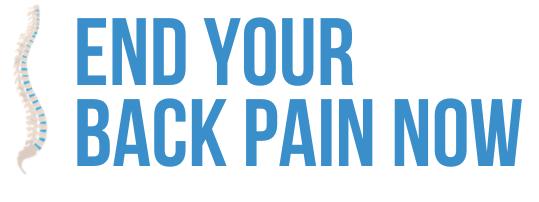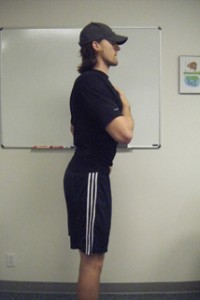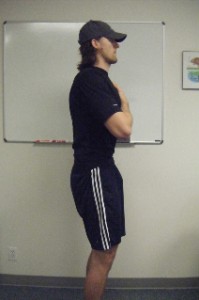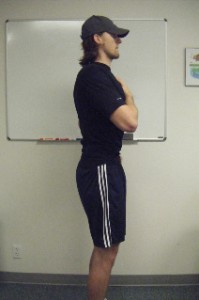Disc herniations are most common in the age range of 35-55, due to the beginning of fluid loss in spinal discs. Contrary to what is popularly assumed, it is actually one of the lesser causes of lower back pain. Typically, the only recommendation that most medical doctors make for this condition includes surgical intervention, which may include disc-ectomy or spinal fusion. Other than that, the usual pharmaceutical route is taken for decreasing pain.
Pretty weak, right??
I have seen more cases than I care to count. Most people with disc pathology initially start off with quite a bit of pain. In an effort to find a solution, they visit their primary care physician, who essentially only proves them with either a written prescription for pain medication, or a referral to an orthopedic surgeon. They opt to wait, but in the meantime, the pain is not decreasing, mostly due to the fact that disc herniations take a WHILE to get better, sometimes up to 18 months if significant tearing in the annular fibers has occurred. The doctor and/or physical therapist generally doesn’t teach the lifestyle factors that are necessary to heal, such as how to lift properly, what TO do and what NOT to do, and exercises plus stretches that are necessary to correct body alignment and therefore relieve spinal disc pressure.
So, at this point, it appears that surgery is the only option. Once the surgery is performed, as statistics have ADAMANTLY shown, pain is only resolved in a SMALL population of post-surgical back pain sufferers. As many as 2/3 are in MORE pain!
Now, the situation becomes clear. The spine does not move as it was originally intended. Muscle imbalances that were present PRIOR to the surgery are usually worse now, due to the fact that now many key spinal stabilizer muscles are inhibited (shut off) due to the surgical intervention, pain, and the gut stress caused by anti-inflammatory medications.
Unfortunately, these back pain sufferers, now tainted by the medical community, try one alternative therapy after another, ultimately seeking to find effective pain relief that will actually LAST. Most of these therapies do NOT address the underlying mechanisms that are responsible for the pain, and focus mostly on symptom relief only.
I have a soft spot for such cases. I can’t possibly understand the EXPERIENCE of your situation, but know VERY WELL your frustration with a lack of answers to your pain. With that said, I have put together some essentials that you MUST know if you are seeking relief from disc herniations or bulges.
- Lifestyle Vs. Therapy?
One of the most important things to keep in mind with spinal derangements is that they should be treated with MUCH greater caution and care than simple muscle imbalance generated lower back pain. Spinal derangements such as disc bulges take TIME to heal, rather than a simple manual therapy technique, exercise, stretch, etc.
The focus on disc issues should be on LIFESTYLE awareness. Most people do just fine when in their therapist’s or doctor’s office, but typically end up making their situation worse in the home or work environment. Keep in mind, no matter how GOOD your 60 minute therapeutic exercise or manual therapy session is, it simply will NOT compete with 23 hours of bad postural alignment, horrendous inflammation-producing eating habits, and chronic stress.
Now that you understand that LIFESTYLE is first and foremost, lets start there….
Understanding the Basic Rule:
The majority of disc herniations are of posterior protrusion, which means that the disc is bulging toward your back side, rather than toward the front of your body, which would be called an anterior disc bulge. Anterior disc bulges are somewhat rare unless you have had some sort of trauma such as car accident, or having something dropped on you from above. Based on this, I will be mostly focusing on POSTERIOR disc problems.
Most posterior disc bulges cause pain when flexion occurs, which is bending forward, allowing your back to round. In this situation, the disc moves posteriorly, thus compressing on the spinal nerves.
Obviously, this is the position you want to avoid at ALL costs. Now, traditionally, the treatment for such disc bulges would be extension therapy. That would focus you on extending your spine to reduce disc pressure. On most occasions, this works, however, in some cases, because of how the disc has bulged, even extension may cause pain initially.
That essentially leaves 2 options. Either perform an extension based program for relief, OR stay in NEUTRAL spinal alignment until the situation improves, then attempt extension based therapy. It really depends on the situation, but when in doubt, NEUTRAL spine is the place to be! If you don’t move, then you won’t hurt more!
Here is a quick video:
httpv://www.youtube.com/watch?v=v51wBntP0Rc
Obviously at first, this one homework assignment may be enough for most disc herniation patients. Why? Well, you need to LEARN how to move your pelvis into anterior and posterior pelvic tilt (which moves the spine!) in order to find out if extension hurts, and exactly where neutral spine actually IS.
- Locating Neutral Spine:
First, tilt your pelvis into anterior pelvic tilt. As you can see in the pic below, this involves ARCHING your lower back, thus increasing your lumbar curve. With most disc herniations, this is the most comfortable position to be in.
Then, GENTLY tilt your pelvis posteriorly. To do this, gently squeeze your glutes and move your pelvis as if “tucking your tail”. If you have a disc herniation, too much posterior pelvic tilt, which causes your lumbar spine to flatten, may cause increased disc pressure and thus pain. Do NOT go too far in this motion.
Now find the region that is mid-way between anterior and posterior pelvic tilt. This is called NEUTRAL. The neutral zone is pretty large, and the best place is the one that causes you the least discomfort.
Now that you understand how to move your pelvis, thus influencing your lumbar curve, the key is to find the place between NEUTRAL and ANTERIOR Pelvic Tilt that decreases your pain the MOST. This is the position you want to spend MOST of your time in.
Focus on finding this position every hour on the hour as an assignment. This is step one!
Then come back for part 2!
Sam Visnic NMT–



